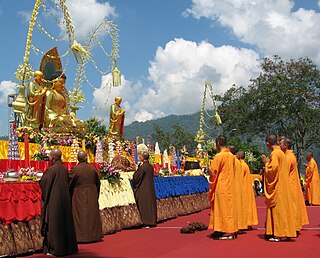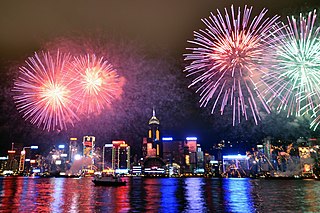
There are various types and subtypes of the Chinese calendar and horology, which over a millennium plus history has produced many variations, currently mainly associated with the 21st century nation state of the Peoples Republic of China. The topic of the Chinese calendar includes various traditional types of the Chinese calendar, of which particularly prominent are, identifying years, months, and days according to astronomical phenomena and calculations, with generally an especial effort to correlate the solar and lunar cycles experienced on earth—but which are known to mathematically require some degree of approximation. Typical features of early calendars include the use of the sexagenary cycle-based ganzhi system's repeating cycles of Heavenly Stems and Earthly Branches. The logic of the various permutations of the Chinese calendar has been based in considerations such as the technical from mathematics and astronomy, the philosophical considerations, and the political, and the resulting disparities between different calendars is significant and notable. Various similar calendar systems are also known from various regions or ethnic groups of Central Asia, South Asia, and other areas. Indeed, the Chinese calendar has influenced and been influenced by most parts of the world these days. One particularly popular feature is the Chinese zodiac. The Chinese calendar and horology includes many multifaceted methods of computing years, eras, months, days and hours.

The New Year is the time or day at which a new calendar year begins and the calendar's year count increments by one. Many cultures celebrate the event in some manner. In the Gregorian calendar, the most widely used calendar system today, New Year occurs on January 1. This was also the first day of the year in the original Julian calendar and the Roman calendar.

Phnom Penh is the capital and most populous city of Cambodia. It has been the national capital since the French protectorate of Cambodia and has grown to become the nation's primate city and its economic, industrial, and cultural centre. Before Phnom Penh became capital city, Oudong was the capital of the country.

Vesak, also known as Buddha Jayanti, Buddha Purnima, Buddha Day, is a holiday traditionally observed by Buddhists in South Asia and Southeast Asia, as well as Tibet and Mongolia. It is the most important Buddhist festival. The festival commemorates the birth, enlightenment (Nibbāna), and passing (Parinirvāna) of Gautama Buddha in Theravada, Tibetan Buddhism and Navayana.

In the Gregorian calendar, New Year's Day is the first day of the calendar year, 1 January. Most solar calendars begin the year regularly at or near the northern winter solstice, while cultures and religions that observe a lunisolar or lunar calendar celebrate their Lunar New Year at less fixed points relative to the solar year.
A dragon boat is a human-powered watercraft originating from the Pearl River Delta region of China's southern Guangdong Province. These were made of teak, but in other parts of China different kinds of wood are used. It is one of a family of traditional paddled long boats found throughout Asia, Africa, the Pacific islands, and Puerto Rico. The sport of dragon boat racing has its roots in an ancient folk ritual of contending villagers, which dates back 2000 years throughout southern China, and even further to the original games of Olympia in ancient Greece. Both dragon boat racing and the ancient Olympiad included aspects of religious observances and community celebrations, along with competitions.

Lunar New Year is the beginning of the new year based on the lunar calendar or lunisolar calendar. The lunar calendars follows the lunar phase while lunisolar calendars follow both the lunar phase and the time of the solar year. The event is celebrated by numerous cultures in various ways at diverse dates.

The Mid-Autumn Festival, also known as the Moon Festival or Mooncake Festival, is a harvest festival celebrated in Chinese culture. It is held on the 15th day of the 8th month of the Chinese lunisolar calendar with a full moon at night, corresponding to mid-September to early October of the Gregorian calendar. On this day, the Chinese believe that the moon is at its brightest and fullest size, coinciding with harvest time in the middle of autumn.

Cambodia, officially the Kingdom of Cambodia, is a country in Mainland Southeast Asia, spanning an area of 181,035 square kilometres, bordered by Thailand to the northwest, Laos to the north, Vietnam to the east, and the Gulf of Thailand to the southwest. The capital and most populous city is Phnom Penh.

The traditional Korean calendar or Dangun calendar is a lunisolar calendar. Dates are calculated from Korea's meridian, and observances and festivals are based in Korean culture.
The Buddhist calendar is a set of lunisolar calendars primarily used in Tibet, Cambodia, Laos, Myanmar, India, Sri Lanka, Thailand and Vietnam as well as in Malaysia and Singapore and by Chinese populations for religious or official occasions. While the calendars share a common lineage, they also have minor but important variations such as intercalation schedules, month names and numbering, use of cycles, etc. In Thailand, the name Buddhist Era is a year numbering system shared by the traditional Thai lunar calendar and by the Thai solar calendar.

The Mongolian Lunar New Year, commonly known as Tsagaan Sar, is the first day of the year according to the Mongolian lunisolar calendar. The festival of the Lunar New Year is celebrated by the Mongols and some Turkic peoples. The holiday has shamanistic influences.

Losar also known as Tibetan New Year, is a festival in Tibetan Buddhism. The holiday is celebrated on various dates depending on location tradition. The holiday is a new year's festival, celebrated on the first day of the lunisolar Tibetan calendar, which corresponds to a date in February or March in the Gregorian calendar. In 2020, the new year commenced on the 24th of February and celebrations ran until the 26th of the same month. It also commenced the Year of the Male Iron Rat.

Buddha's Birthday or "'Buddha Day"' is a primarily Buddhist festival that is celebrated in most of South, Southeast and East Asia, commemorating the birth of the prince Siddhartha Gautama, who became the Gautama Buddha and founded Buddhism. According to Buddhist tradition and archaeologists, Gautama Buddha, c. 563-483 BCE, was born at Lumbini in Nepal. Buddha's mother was Queen Maya Devi, who delivered the Buddha while undertaking a journey to her native home, and his father was King Śuddhodana. The Mayadevi Temple, its gardens, and an Ashoka Pillar dating from 249 BCE mark the Buddha's birth place at Lumbini.
The Golden Week, in the People's Republic of China, is the name given to three separate 7-day or 8-day national holidays which were implemented in 2000:

Seollal is a traditional festival and national holiday commemorating the first day of the lunisolar calendar. It is one of the most important traditional holidays for ethnic Koreans, being celebrated in both North Korea and South Korea as well as Korean diaspora all around the world.

Chinese New Year is the festival that celebrates the beginning of a new year on the traditional lunisolar Chinese calendar. In Chinese, the festival is commonly referred to as the Spring Festival as the spring season in the lunisolar calendar traditionally starts with lichun, the first of the twenty-four solar terms which the festival celebrates around the time of the Chinese New Year. Marking the end of winter and the beginning of the spring season, observances traditionally take place from Chinese New Year's Eve, the evening preceding the first day of the year, to the Lantern Festival, held on the 15th day of the year. The first day of Chinese New Year begins on the new moon that appears between 21 January and 20 February.

Songkran is a term derived from the Sanskrit word, saṅkrānti and used to refer to the traditional New Year for Buddhist calendar celebrated by Bengalis, Cambodia, Laos, Myanmar, Sri Lanka, Thailand, parts of northeast India, parts of Vietnam and Xishuangbanna, China. It begins when the sun transits the constellation of Aries, the first astrological sign in the Zodiac, as reckoned by sidereal astrology. It is related to the equivalent Hindu calendar-based New Year festivals in most parts of South Asia which are collectively referred to as Mesha Sankranti.
Confucius’ Birthday, falls on the 27th day of the eighth lunar month of the Chinese calendar. It is officially celebrated on Taiwan as "Teachers' Day" on September 28, and in Hong Kong on the third Sunday of September as "Confucius Day", though the traditional date is also often observed. Mainland China observes a "Teachers' Day" on September 10 to celebrate the efforts of today's teachers, and there is a legislative effort underway to move that to September 28.
















